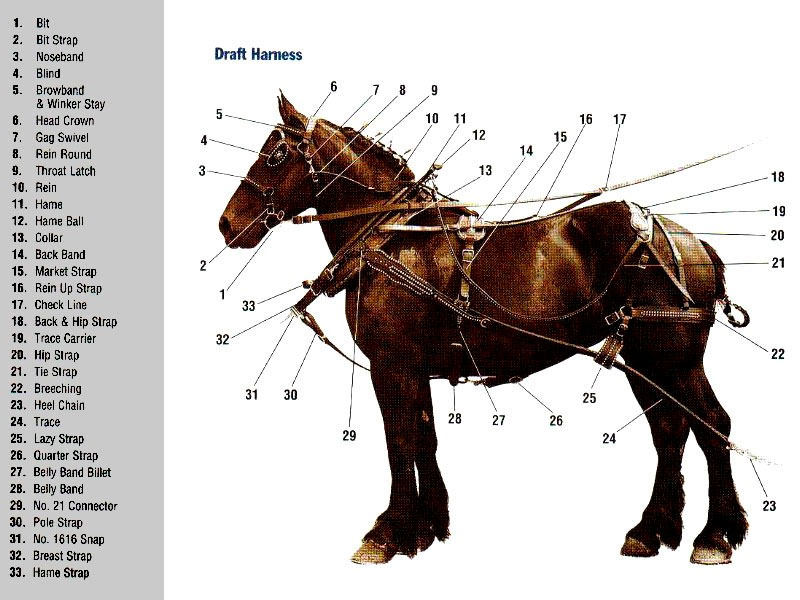Frequently Asked Questions
Below are some of our common questions. If there are any questions not listed below please contact us.
How do I measure a collar?
 To measure a collar, you measure the inside of the collar from the top to the bottom.
To measure a collar, you measure the inside of the collar from the top to the bottom.
The basic parts of a collar are the face, which is the part that sits on the horse, the back that is the side of the collar that you see when on the collar. The rim, which is on the front of the collar and the hames, sit in between the rim and the back.
There are many different styles of collars but they all do the same thing and that they allow the horse to push against the hames for the load to be moved by the horse.
How do I measure a horse for a collar?
There are a number of different methods that can be used to measure a horse for a collar.
I find it best to measure the near side front leg (left) at the top where it meets the body horizontally around the leg and will give you a good indication of the collar size.
You can also measure a horse’s collar by putting two carpenters’ squares together to form a “C”. Place the top of the “C” in front of the withers; place the bottom of the “C” two inches in front of the shoulders. Be sure to allow finger room at the base of the throat. Measure the inside of the “C”.
The collar should be so it fits the horse with a gap at the bottom so you can put your hand in between the collar and the horse. The collar when fitted should not rock on the horse’s neck.
What different styles of collars are there?
The styles of collars are full sweeney or half sweeney, and the difference is that a half sweeney has a narrow face on the top to allow for a bigger crest on our horses as they are not used as often as they used to be.
The other type of collar is an adjustable collar which allows you to have three sizes of collars such as a 23” , 24” 25’ and this is achieved with a hood on the collar and a buckle on each side of the collar with three holes of adjustment.
More damage can be done to horses by having too large of a collar, due to the fact that the collar rubs on the shoulder of the horse and creates a sore.
Remember, do not open the throat of the collar too wide when putting the collar on, and put it on near the head of the horse where the neck is narrowest so as not to cause the collar to bust at the base.
What should you do when you finish working with a horse?
When you finish working a horse after you take off the collar, feel the surface for any sores or scolding on the horse where the collar has been sitting. If you find scolding, it will feel like a rippling of the skin, like when you been in the bath too long. One solution for scolding is to put urine on the scolding and it will heal faster. Always run your hands over the horse’s neck where the collar will sit before you put the collar on and run you hand over the inside of the collar to ensure nothing will hurt the horse.
How do I store a collar?
When you have finished using a collar, hang in upside down on a piece of 100 mm plastic pipe so the collar does not go out of shape.
Maintain your collars with a good leather conditioner (with a small amount of eucalyptus in it to deter mice), and they will last you a lifetime.
Harness Diagram

Quality Horse Leather Products
We are manufacturer and supplier of quality work harness in leather and beta and suppliers American style horse collars both standard and adjustable. Browse the site and if you cannot find what you are looking for, please get in touch with L for Leather!
Online Orders and Shipping
We send the horse harnesses all over Australia via Australia Post at a reasonable cost.
Yes, we sell and deliver internationally.
Due to difficulties in calculating international shipping, international orders to countries excluding New Zealand, require manual processing.
Please contact us to arrange your order.
